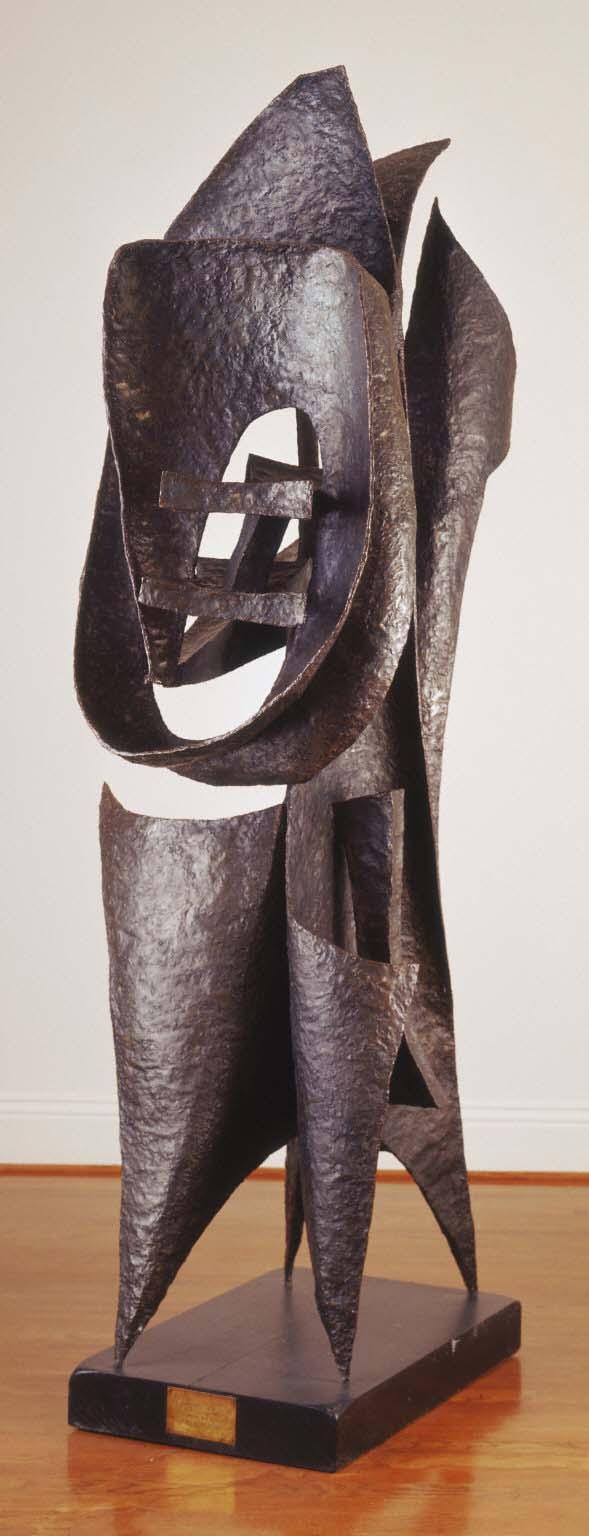Ancestor
Seymour Lipton ( 1958 )

Seymour Lipton completed Ancestor in 1958. His goal was to express abstract visual representations of the complex human psyche. Lipton arranged shapes to create dynamic forms that enclose or oppose one another; he called this “organicism.” His work was rooted in his deep interest and appreciation for sociology, psychology, and myth. The result was a “final work [that was] ambiguously unified and rich in direct and implied experience.” Lipton was greatly inspired by primitive art because of its “more metaphysical, less representational, less realistic presentations of man about man.”
Ancestor represents Lipton’s work when his motifs were most refined. The work is part of the Hero series of the late 1950s, which was not conceived as a unit but resulted from Lipton’s increasing use of vertical compositions suggestive of standing human figures. In Ancestor, angular, stiff shapes with threatening points and a rounded swirl of metal evoke sexual imagery alluding to reproductive organs of humans and plants, thus stressing the mythic sources of all life. Dynamic contrasts result from the juxtaposition of forms, heightening the sculpture’s expressive power. In Lipton’s words, the work “intrudes into the present through sharp edges and is a faceless figure like an ancestor.”